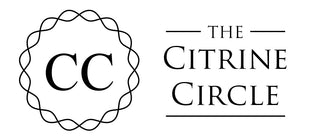Tiffany Stone is a breathtakingly gorgeous crystal that can only be found in one location in the world, making it extremely hard to come by and very expensive. In the last few months though, the market seems to have been flooded with cheaper Opalised Fluorites from Turkey and China that are being sold as Tiffany Stone, usually with the same accompanying info as Tiffany Stone should be, so we thought we’d dig a little deeper into the two and help you spot the real from the imposters.
Shop our genuine Tiffany Stone tumbles here
I spent a long time doing a lot of reading around the subject, and decided to go straight to the source - I emailed one of the Chinese companies offering the “Tiffany Stone” towers, and asked them if it was mined in China, or imported from the USA - they replied confirming it was mined in China. Just as a little side note - if you’re wanting more honest answers from a supplier, don’t just ask them a leading question to which they will likely agree if it’ll get them a sale (eg “Is this Tiffany Stone?”) because they’ll usually just tell you what you wanted to hear.
At first glance, the two can look pretty similar:


There are three main things to look for when trying to decide if the Tiffany Stone you’re looking at is real or fake (and in this instance by fake we don’t mean a fake crystal, we just mean something that’s been mislabelled as something much rarer than it actually is) - these are the colours, the shape and the price.
Location
Genuine Tiffany Stone can only come from one place in the world - the Brush Wellman Beryllium Mine in Utah and a few small sites surrounding it, which is now closed to public collecting and focuses on mining for the rare Beryllium which is used in military and aerospace manufacture. This scarcity of availability (much of the later material was smuggled out by mine workers) means that it is extremely hard to get hold of, and so very expensive, especially in larger pieces or higher qualities. The newer finds of Opalised Fluorite (or in some cases simply low quality Fluorite), mostly from China, are very cheap in comparison, making it more attractive for the huge amount of Chinese wholesalers to sell on to unsuspecting retailers under the name Tiffany Stone. Genuine Tiffany Stone is very rarely seen offered from Chinese wholesale companies, due to the very high price to start with in order to buy and then import from the US, carve and then resell at a profit. US minerals as a whole are much more expensive than many other countries in the world due to multiple factors ranging from the large internal market, high export and import costs and higher costs of mining and manufacture, compared with somewhere like China or Madagascar. This, added to the scarcity of the crystal is what makes Tiffany Stone an expensive but highly desirable crystal.
Colour
The second telltale sign is the colour, which is harder to tell at first glance - genuine Tiffany Stone is a warm mixture of very soft to very deep purple/blue shades, warm whites, oranges, yellows, blacks and even pinks, with shades that fade and blend into each other, creating a “watercolour” effect as Stu calls it. The Opalised Fluorite coming from China is a much colder, harder set of whites and purples, usually with harsh white lines dividing the two, as if the colour had been dropped onto it (more like an acrylic painting if you’re artistically minded). This is most likely pretty difficult to visualise, so we have included a whole set of images below of both the cheap version that Chinese wholesalers are offering, and also a selection of images of genuine Tiffany Stone from Utah.
Material from China:




Genuine Utah Tiffany Stone:




Shape
Another good indication of whether it’s genuine Tiffany Stone is the shape that you’re buying it in - because Tiffany Stone is so rare and expensive, it will very rarely be cut and polished into uniform forms like towers, intricate carvings, spheres, bowls etc, because so much of the precious raw crystal is lost. Cut and polished Tiffany Stone is usually found in freeforms that mould to the shape of the rough crystal, meaning minimal waste. Where spheres are found, they are incredibly expensive, and even the offcuts are saved and resold. A lot of Tiffany Stone is also cut down and made into jewellery, rather than left as larger pieces, as it fetches more money - we once found a gorgeous large slab of raw Tiffany Stone hiding in the back room at one of our suppliers, but we sadly weren’t allowed to buy it as it was destined for jewellery cabs.
Unlikely shapes for genuine Tiffany Stone due to the amount of waste material:


More likely shapes - freeforms that work with the contours of the rough crystal:


So what actually is Tiffany Stone? It’s often referred to as an Opalised Fluorite, which is why the cheaper Chinese and Turkish material gets passed off as Tiffany Stone so easily, but it actually is made up of a variety of different crystals. Fluorite and Opal are the main constituents, but it also has Bertrandite, Quartz, Chalcedony, Dolomite and Manganese Oxide. This mixture of different minerals gives it a unique colouration and appearance - a soft watercolour painting sometimes cut through with striking lines of black Manganese dendrites or pockets of botryoidal sparkles.
The cheaper material coming out of China is proving more difficult to research and find proper documentation on - as it may well just be a lower quality Fluorite with inclusions of white Opal or Quartz, there would be little need to record much information about it in geological circles, but this may just be the very new nature of the finds, we may learn more about it in the future as the information becomes available.
Shop our Tiffany Stone collection here


Judy
Thank you so much for making this clear. So much of the market is flooded with mislabelled Chinese crystals and gems. I’m so glad that I read this article. I will make sure that I buy from reputable sources. Thank you.
Lucernae
Amazingly informative article. Thank you so much for sharing! x